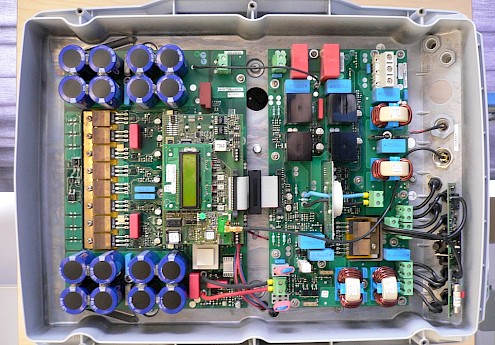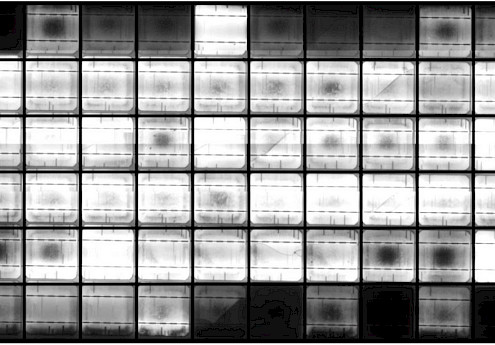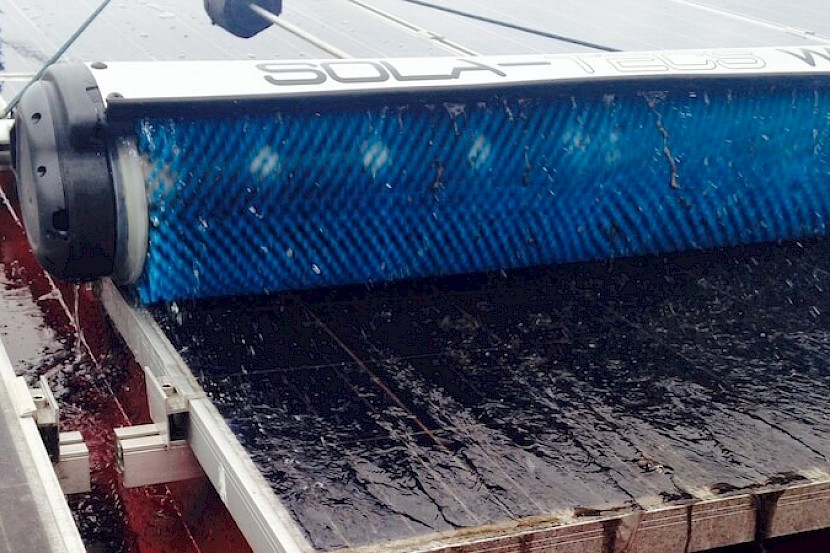
Photovoltaic cleaning – When should you clean your solar system?
Since most PV systems are mounted on the roof at an angle of 20° to 30°, natural effects are created that are usually sufficient to clean the photovoltaic system. This self-cleaning effect on the solar modules is caused by rain, wind and snow.
Whether power losses occur due to dirty PV modules and how severe these effects are depends on the location of the solar system. PV systems in residential areas are more likely to be exposed to “normal” pollution from dust and exhaust fumes. Plants in rural areas are completely different, which, in addition to large amounts of pollen, also have to contend with fats and animal excrement. Either way, over time it may become necessary to carry out a solar cleaning.
When should a PV cleaning be done?
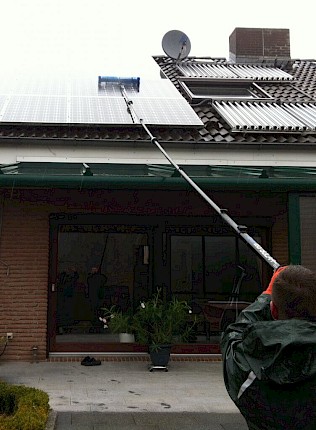
Cleaning the solar system is worthwhile in spring when summer is just around the corner or in late summer/autumn. When cleaning the PV system in autumn, system operators can hope for the highest possible yield during periods of low yield. Whether autumn or spring cleaning is necessary is always decided by different parameters that affect a system.
Solar systems with a low roof pitch
If solar systems are mounted too flat on a roof and therefore have too little module inclination, dirt such as dust and dirt can settle more easily. With these systems, the water does not completely drain off the surfaces and the dirt sticks to the edges of the module frames. Over time, a dirt rim builds up and the PV modules no longer clean themselves.
Framed or frameless – solar modules clean themselves differently
Contamination tends to settle on the edges and in the corners of module frames, which can often only be removed again with a professional photovoltaic cleaning device. This is completely different with laminates. These frameless modules (thin film modules or crystalline modules) have the advantage that water can drain off the surface more easily. The natural self-cleaning effect is enhanced here.
Horizontal or vertical - are there differences in photovoltaic cleaning?
Looking at a single solar panel, it seems logical that more dirt can collect when mounted horizontally. The reason for this is that the modules face down with the longer side and thus offer a larger area. However, the distance between the solar cells and the frame is often larger on the long sides than on the short ones, so that a larger dirt rim can build up until individual solar cells are covered or shaded. However, if the edge of dirt is too large, the solar cells must also be cleaned when installed horizontally.
6 reasons why you should clean your solar system
Pollen
In spring and autumn there is an increased pollution of pollen in the air. Significant deposits can be seen on the PV modules, especially if it has not rained for a long time. Larger yield losses are not to be expected, since pollen often disappears again with the next downpour.
Bird droppings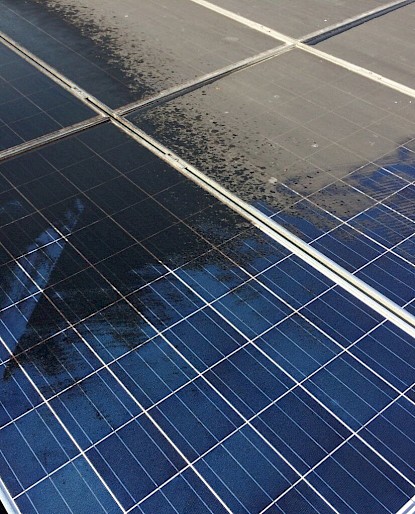
Cleaning bird droppings from solar cells as a result is a topic that many system owners are familiar with. The aggressive bird droppings can stubbornly settle on the modules. Even heavy rain showers are often not enough to completely remove everything.
Mosses and lichens
As already described above, moss and lichen accumulate on the modules over time. Photovoltaic modules with frames are particularly affected here. Over time, these mosses and lichens slowly grow into the module and shade the solar cells. Here it is necessary to clean the solar system.
Region with little or no snow
As a rule, a winter without snow is an advantage for photovoltaic systems, since there is no shading. With regard to solar cleaning, however, snow can have a positive effect, since the snow that slides off can clean the solar modules.
Photovoltaic cleaning on farms
Solar systems on agricultural objects are often affected by heavy contamination due to the increased occurrence of dirt and dust. Animal excretions such as fat and ammonia are also deposited on the modules. Poultry and fattening houses therefore have to contend with particularly heavy soiling.
6 reasons why you should clean your pv system
In principle, a PV cleaning is not a big deal. However, there are a few important things to keep in mind. On the one hand, a PV system is an electrical system, which is why care should be taken not to come into contact with live components such as cables and plugs. On the other hand, when cleaning photovoltaics, make sure that you always have a secure footing. This is important because plants are often located on roofs at high altitudes. Likewise, you should not use high-pressure cleaners, strong cleaning agents, thinners or similar aids. These can attack and damage the surface of the modules.
If you want to be on the safe side, it is better to hire a professional solar cleaner. In addition to special photovoltaic cleaning brushes and other devices for solar cleaning, he also has a great deal of experience in cleaning solar modules.
In addition to the know-how to avoid unwanted glass breakage, a solar cleaner also has specialist knowledge of the specifications of module manufacturers. This also cleans the modules with specially treated water in order to avoid deposits such as limescale residues on the modules.


